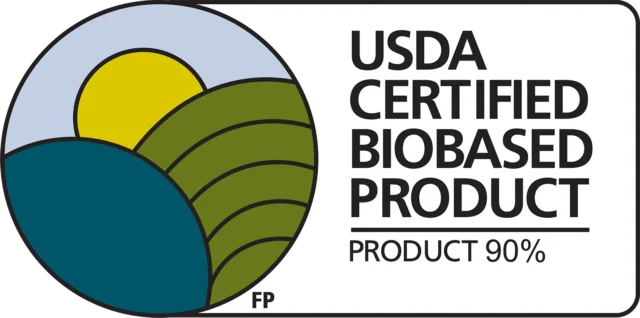(S)-Campholenaldehyde (Campholen aldehyde) is colorless liquid with fresh and woody odor. It is prepared by the isomerization reaction of 2,3-epoxy pinane.
There are optical isomers of campholenic aldehyde. (R)-(+)-campholenic aldehyde is CAS 4501-58-0, and (S)-(-)-campholenic aldehyde is CAS 23727-15-3.
(S)-Campholenaldehyde is an important intermediate in the synthesis of sandalwood fragrances.
Acrylic Acid Modified Rosin (AAMR) is created through the reaction of gum rosin with acrylic acid. Typically, AAMR offers improved adhesion, greater solubility, and enhanced flexibility and stability compared to gum rosin.

AR120240 is USDA BioPreferred® Program certified product, and the product contains 90% USDA certified biobased content.
WS-10 (Menthoxypropanediol) provides a long-lasting cooling effect (Strength 4.5) without the minty odor or taste associated with menthol (Strength 1) . It can be used in lower concentrations compared to menthol while achieving a similar cooling effect.
The WS series cooling agents supplied by our company have unique advantages in the supply chain. Welcome to purchase.
Cooling agent WS-5 (N-((ETHOXYCARBONYL)METHYL)-P-MENTHANE-3-CARBOXAMIDE) is a powerful synthetic coolant used to provide a cooling sensation in various products. WS-5 delivers a potent (Strength 4) and lasting cooling effect (about 10 minutes).
The WS series cooling agents supplied by our company have unique advantages in the supply chain. Welcome to purchase.
WS-12 ((1R,2S,5R)-N-(4-methoxyphenyl)-5-methyl-2-(propan-2-yl)cyclohexane-1-carboxamide) is a synthetic compound designed to deliver a cooling sensation across various products. It offers the strong cooling effect, rated at strength 3.5. This effect lasts up to 36 minutes, providing ample time for a refreshing cooling experience.
WS-23 (2-Isopropyl-N,2,3-trimethylbutanamide) is known for its clean and long-lasting cooling effect (cooling strength 0.75) . Unlike menthol, WS-23 provides a cooling sensation without the accompanying minty flavor or odor, making it versatile for various applications.
Cooling agent WS-3 (as known as Koolada 3, N-Ethyl-p-menthane-3-carboxamide) is a synthetic compound used to provide a cooling sensation in various consumer products. It offers a cooling effect of 1.5 and lasts up to 6 minutes.
It is valued for its mild, pleasant, and long-lasting cooling properties, making it a versatile ingredient in many consumer products.
Cyclademol appears as a colorless to pale yellow transparent liquid. It is prepared using α-Pinene as the starting material through reactions such as hydrogenation and hydration under the action of a catalyst. It has minty and camphor-like aromas, which become stronger as the purity increases.
Isobornyl acrylate (IBOA) is a kind of acrylic ester monomer with a bridged-ring structure. It has excellent adhesion properties, good chemical resistance, and low shrinkage, making it a popular choice for use in UV-curable coatings on various substrates such as plastics, metals, and wood. IBOA is applied as an important monomer product in the printing ink formulation, solvent-based high-solid content transparent coatings, and curing coatings as a thickening agent, base material, reactive diluent, and curing agent.
IBOA can also be used as a viscosity improver in dental resin, reducing the polymerization shrinkage of resin-based dental restorative materials. When used in bone cement, it can reduce adverse biological effects during implant bonding processes.
Isobornyl methacrylate (IBOMA) is an acrylic ester monomer with a bridged-ring structure. Its double bond is a C=C bond, with the methyl group attached to the carbon adjacent to the carbonyl group. Typically, the polymerization rate of methacrylates is slower than that of acrylates because the additional methyl group impedes rotation around the double bond and affects overall reactivity. Compared to IBOA, IBOMA may have a higher viscosity, affecting the ease of preparation process.
Due to its molecular structure characteristics of IBOMA, the polymer has excellent high light, vividness, abrasion resistance, medium resistance and weather resistance, and its moisture absorption is significantly lower than MMA (methyl methacrylate). In addition, acrylic resin added with IBOMA has a good compatibility with polyester, alkyd and many volatile paint film forming substances.
Polymenthene™ (Poly-1-p-Menthene) is a polymer derived from the natural compound 1-p-menthene, a cyclic monoterpene commonly found in various essential oils. This natural origin imparts unique physical and chemical properties to Poly-1-p-Menthene, making it a valuable material in multiple industries.
The primary component of Poly-1-p-Menthene is sourced from pine tree. This natural origin not only ensures its environmental friendliness but also aligns with the growing demand for sustainable and eco-friendly products. As a bio-based material, Polymenthene™ has a minimal environmental impact during both production and use, making it an ideal alternative to many traditional synthetic chemicals.
Terpene phenolic resin, a variety of terpene raw materials were polymerized and reacted with phenol in a certain proportion. It is a certain polarity and good compatible with rubber of high strength and high density. It is suitable for hot melt pressure sensitive adhesive with high temperature and high strength, the initial adhesion and stripping force is at high level. and better than monomer alpha terpene resin.
